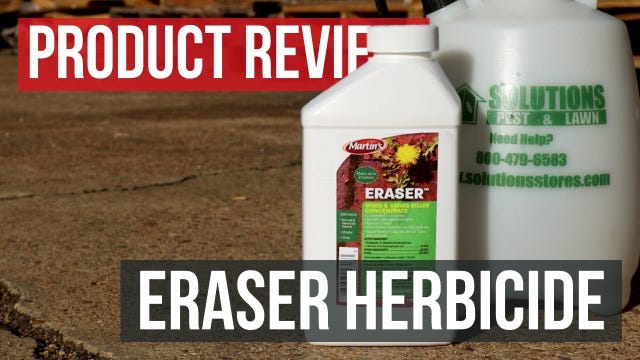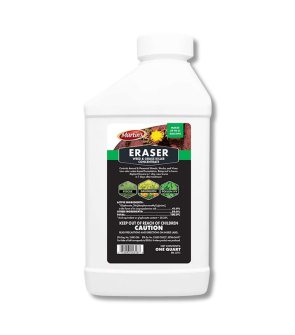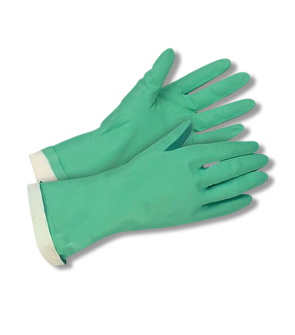Gain access to personalized product screening, the best pricing, rewards, and more!
Most Effective Products
How to Get Rid of Weeds in Driveways
This article is a general DIY guide that discusses the methods for killing weeds in your home driveway. By reading our DIY guide, you can effectively control and prevent various broadleaf and grassy weeds from forming in your driveway by following the steps and suggested products.
When homeowners think of weeds, they often imagine these unwanted plants infiltrating yards, gardens, or landscaping. However, weeds can also grow in your home's driveway through the smallest crack or opening. Once developed, weeds tarnish your home's curb appeal and become a nuisance to control.
While it may seem harmless, these foliages can harm your driveway by making cracks larger and breaking up the surface. Over time, these obstructions allow seeds of weeds to spread and grow in these areas while also creating suitable habitats for insects.
Like other parts of your yard, driveways need grass control throughout the year, especially in spring or fall. These points of the year have the highest weed growth and germination period. To remove unwanted weeds and grass from your home's driveway, follow the tips and professional quality products in this DIY guide.
Why Do Weeds Grow in Driveway Cracks?

Broadleaf and grassy weeds are opportunistic plants that grow when conditions such as certain temperatures, moisture levels, bare or thin turf, and open spaces are present.
Paved areas, especially concrete or asphalt ones, will heat up in warm weather and direct sunlight. These materials retain heat well and provide certain weeds with high temperatures and consistent heat to stay active.
Weeds can also find themselves in driveways because they are flat and retain more moisture than sloped surfaces like sidewalks or patios.
After rain or irrigation, water can soak into the soil. Normally, you wouldd expect it to dry or evaporate, but water can become trapped underneath pavement slabs and accumulate. Plants can access this water by sending roots deep underneath the slab.
How to Kill Weeds in Driveway Cracks
Before applying any herbicides, you must wear the proper personal protective equipment (PPE).
Weeds, like dandelions that grow in driveway cracks may have thick taproots. This makes mechanical control difficult, as simply trimming the weed away doesn’t kill the taproot in the soil. If you try to dig the weed out, there’s a chance even a small piece of the taproot will break off and remain in the soil for the plant to grow back from.
The best way to kill weeds growing in driveway cracks is to use a non-selective herbicide like Eraser 41% Glyphosate. Non-selective herbicides like Eraser will kill any plant to which it is applied.
When applied properly, the chemical will translocate throughout the plant all the way to its roots, killing the plant and its roots entirely. In turf, you would have to worry about accidentally applying the product to the grass around the weed, but that worry is non-existent in pavement.
Spot Treat with Non-Selective Herbicide

Determine how much Eraser 41% Glyphosate to use by measuring the square footage of the treatment site. Measure the length and width in feet, then multiply them together (length X width = square footage).
To control the product drift, you should use a handheld pump sprayer for best results in spot spraying.
Be sure to mark this sprayer for "Non-Selective Herbicide Use Only" to prevent cross-contamination in the future.
To spot treat with Eraser 41% Glyphosate, apply 1 1/2 fl. oz. (3 Tbs) of product per gallon of water per 300 sq. ft. For tougher weeds, use 2 1/2 fl. oz. (5 Tbs) of product per gallon of water per 300 sq. ft.
Fill your handheld pump sprayer with half the amount of water, add the measured Eraser of 41% Glyphosate, and pour in the remaining half of the water. Close the sprayer tank lid and shake until the solution is evenly mixed.
Spot-treat any weed you have found growing in pavement cracks and crevices. Use a fan or cone spray pattern to ensure the leaves are fully coated, and spray the weed to the point of wet but not runoff.
For weeds that are close to other plants, use a barrier to prevent the product from drifting. Be sure to spray on calm days when temperatures are not too hot and when wind speeds are low to minimize drift.
Keep people and pets off-treated areas until the spray solution has dried.
When applied properly, affected weeds will turn yellow and begin to die. Conduct follow-up applications as necessary. After applying Eraser, you should see results within 2 to 4 days, but a second application may be made after 4 weeks.
Remove Weeds From Root

At this point, most, if not all, of the weeds treated with Eraser 41% Glyphosate should be removed. Some stubborn weeds may remain, but you can remove them manually with a glove-covered hand.
If no weeds are present, you will need to use a scraping tool to disrupt the roots of weeds by scraping between the driveway cracks, crevices, gaps, and other voids.
Seal Cracks and Openings

Once the weed has been eliminated from your driveway, take precautions to prevent them from returning. The best way to do this is to fill cracks, crevices, and gaps in and on the side of your driveway with a sealant, concrete mix, or stabilizing sand.
By filling these spaces in, the weeds cannot push through the middle of these areas and prevent weeds from falling into them.
If several large cracks are present or the driveway is uneven; the entire driveway may need replacing.
Key Takeaways
How to Permanently Kill Weeds in Concrete Driveway Surfaces?
- It would be best to apply a non-selective herbicide containing the active ingredient glyphosate, such as Eraser 41% Glyphosate.
How to Prevent Weeds From Growing Between Slabs and Cracks in Driveways
- Seal your driveway slabs, cracks, and gaps with an approved sealant, concrete mix, or stabilizing sand to prevent weeds and grasses from growing between them.
Can Weeds and Grasses Grow in Concrete within Driveways?
- Annual or perennial weeds and grasses will grow through solid surfaces such as concrete or brick in driveways if there are cracks, gaps, and voids.
-
Q:Hi I have weeds growing through my pavers.do you have anything that we can spray to kill weeds that is safe for animals 2. We have crickets eating all my shrubs and flowers. I am using neim oil soap/ chile hot pepper/ . If this does not work, what else can we use? . I see they are advancing to other shrubs in the yard appreciate.you ty Toni5/5/25









